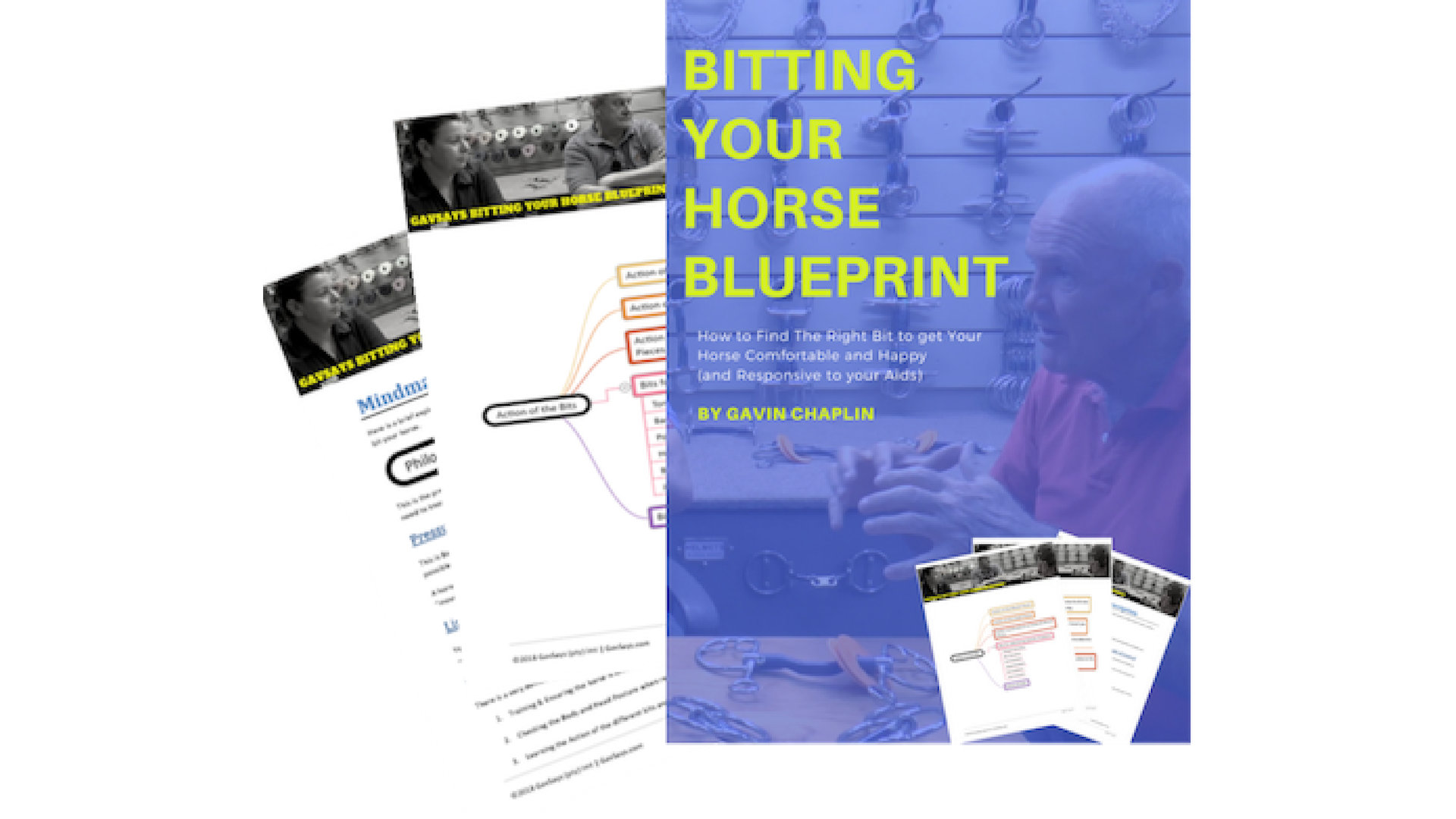What Bit Should I Use for a Horse That Fly Leaps?
Answering Your Questions
This is another really interesting question that came in...
And once again it has a multi-faceted answer.
"What Bit Should I Use for a Horse that Fly Leaps?"
In the video answer below, Gav immediately starts off by asking whether it is actually a bitting issue, and then provides a really interesting discussion on what the cause may actually be...
Taking us back through the holistic approach you should be using to train and bit your horses.
He also touches on a really interesting series on hoof health and hoof problems that we are working on; and how often this is a cause of further medical issues and lameness.
And then of course, comes back to answer the original question. Enjoy!
(Got question you would like us to answer, drop a comment below with the question!)
Bitting a Horse That Fly Leaps:
Next: [Free Bitting Workshop] Learn how to get your horse comfortable, happy and responsive in the right bit.
Also Watch:
Transcript:
Rob: Right Gav, this is an interesting question because I know the answer that you're going to talk about with it, and it's actually asking, "What Bit to use for a horse that Fly Leaps?"
Gav: Wow, again so many answers to these questions. Because is it a bitting problem? I'm not sure about that. Yes it might be the bit, but that question only the horse can answer. That you will try multiple Bits.
But that fly leaping for me so often comes from discomfort. Maybe the neck is out. Maybe the saddle doesn't fit correctly. Maybe the back is out. Maybe it's got a little bit of a tendon problem, or it's sore somewhere.
But here's the thing hear nobody talking about: is the horse's feet.
Because I've been doing some of the most unbelievably interesting work with a person who is an equine hoof-care specialist, and her advice runs in the face of tradition. And remember, you would know my brother was one of the best farriers here in the country. And he made me do a farrier's course, so I'm very steeped in that old tradition.
(01:32) And what she has shown me are the unbelievable wounds inside the horse's foot that we are creating because we neglecting a certain part of that hoof care maintenance, and I don't want to elaborate on that now because I'm sure she will be able to explain in better than I'm. We'll have that on the website at some point.
But what she's shown me is just terrifying, and it's made me cringe at what I've looked at as problems.
Rob: And I suppose it's made you think about how much pain the horse is going through with those problems in it's hoof and how it could be related to...
(02:14) Gav: When you look at your horse's feet Rob, you can see contracted heels. You can see that frog, with a deep central sulcus running down, which is come from the contracted heels, and that contraction there and the wounds we're creating...
It can't land on the pad at the back, on that digital cushion, on the bulbs, because it's hurting. So now it lands this way on the toes. And when it lands on the toes, all that force is being transmitted up the leg, and it all hurts the horse, and I never hear anybody looking to address that problem. I hear all the other stuff, which is fantastic.
Rob: Which you need to address anyway as a cause...
Gav: But nobody's looking at the feet, yes, and for me is so often the problem.
Rob: I've got to say, I can't wait for that series of videos to get finished and to come out because it's something that I want to learn more about.
(03:12) Gav: Rob, it's amazing when you look at it, hey. Because when you just look at your horse's feet from the back and you look at the bulbs, and you see one bulb bigger than the other, or one higher than the other... you know already you've got a problem, so just go look at your own horses out there, and you will see whether they've got a problem or not.
Rob: Very interesting. So, just to go back to that original question of "What bit to use for a horse that fly leaps?" The answer really that you've given is, you need to first make sure that it's not another issue.
So it's not the feet, it's not the tongue, the saddle, etc, etc... a neck issue... And then you can then look at the Bit.
Gav: Yes, correct.
(04:00) Rob: And if we have have consolidated all those other questions, and we have now thought, actually, it must be the bit, everything else is in line, what would you look at then?
Gav: I would go back to my Schooling and find out what the horse can and can't do.
Because maybe it's totally stiff, so when I'm asking it to bend, it can't. Or it doesn't know how to give to the pressure on the reins, it's going into that. So now, when I'm trying to stop it, it's getting heavy...
Rob: Because it's wanting to escape that pressure.
Gav: or the bit is too strong. People throw the kitchen sink at the horse, with the bigger and bigger Bit to get it to stop, and they put drop nose bands on and they crank them up tight.
Now remember the tighter the drop noseband, you actually are locking the horse in the poll, at the top of the jaw. Because a horse when it turns, it slides it's jaw. So if you crank it down too tight you prevent it doing that and you lock it up.
So take away first, before you add. Go back to the gentle, go back to the schooling, go back to milder bits, and teach the horse first and see if you can overcome those problems that way. Might not just be the bit. But it might be the bit if it's too strong.





Comments
Got questions, comments or feedback! Then have your say in the box below...